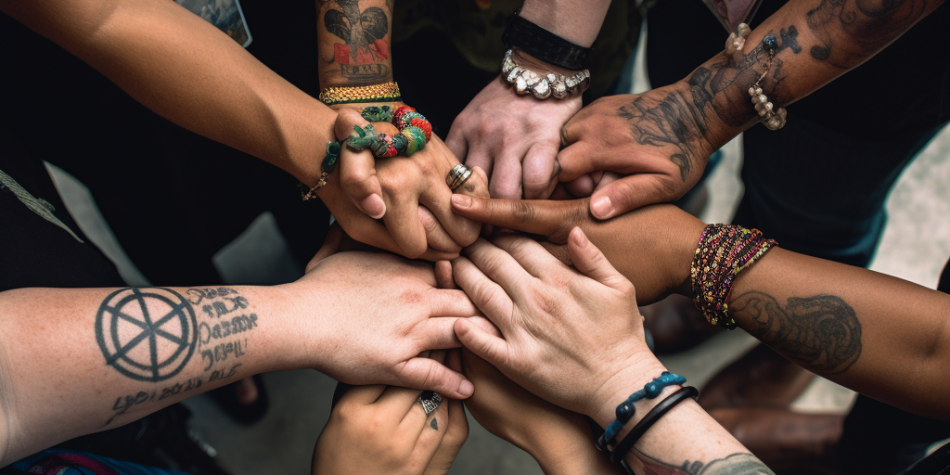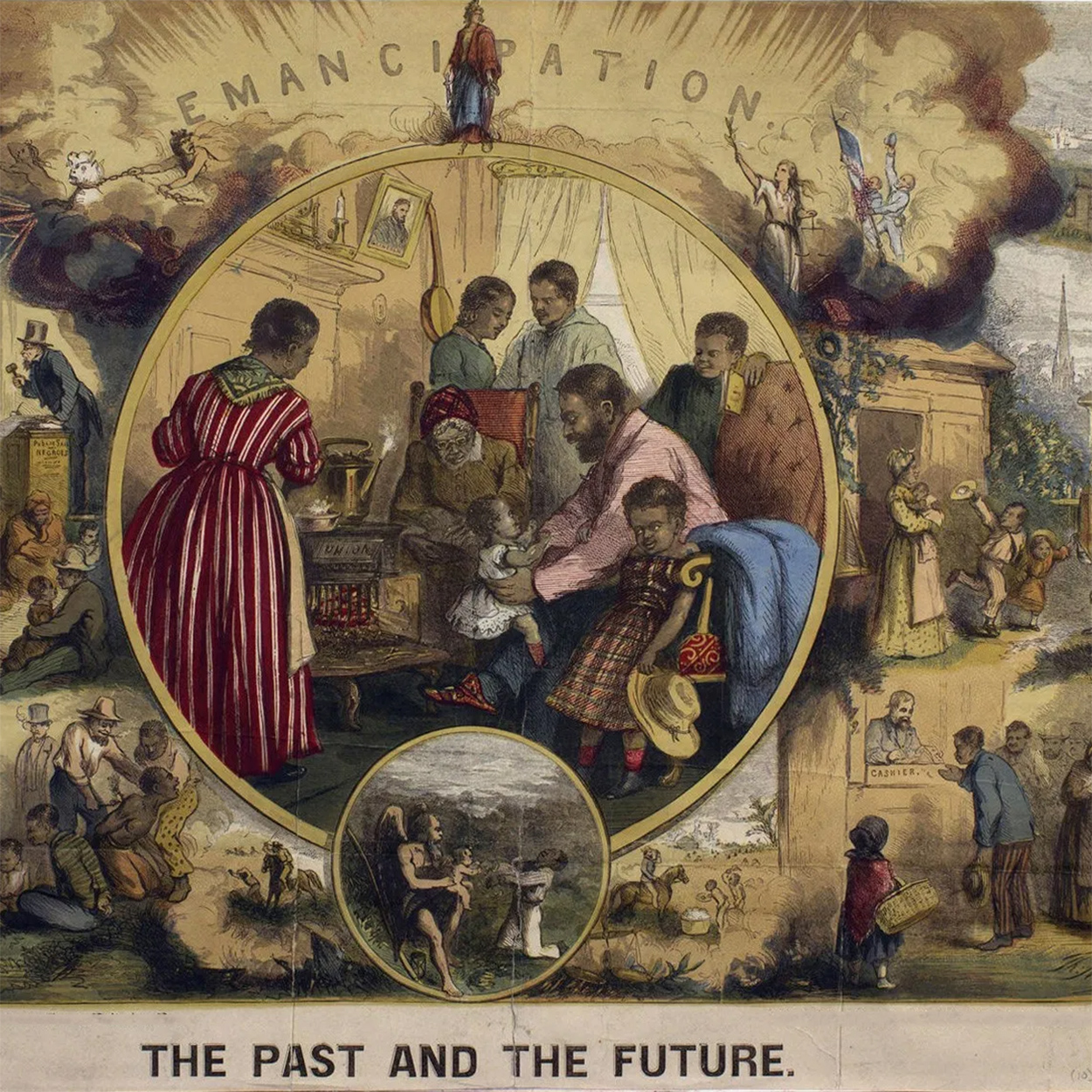Once upon a time, it was fashionable to be “religious” in order to fit into the world around us. That word even had a nice ring to it in broader society—carrying with it a status that was valuable.
The opposite is true in much of the developed world today. In American modernity, it’s stepping away from faith that has increasingly become a mark of cultural cachet—seen by many as a reflection of integrity and courage on the road to full authenticity. Anyone ready to follow their “own truth” away from the orthodoxy of a faith tradition can expect to be met with a social media shower of hearts and emojis to prove just how special that decision truly is.
It’s often taken for granted in such a choice that people are leaving religious passion and commitment behind. But as more and more have pointed out in recent years, ceasing to trust or love the Divine is not to cease to trust or love anything at all. Instead of a dissolution of trust and love, these internal devotions almost always end up getting transferred to something else. People naturally turn to something else for transcendence.
In her accompanying BBC documentary, “The Church of Social Justice,” Lewis, who happens to be an atheist, proposes that “religious impulses don’t die out—they just transmute themselves into something else,” before inquiring further, “Have we really become less religious? Or has our hunger for truth and meaning simply transferred itself to social justice politics?”
The many adorations of modernity. Politics is certainly not the only place our wandering adoration goes. I’ve written previously about some of the disparate ways modern hearts and minds end up spending their love and trust in a secularizing society. These include:
- Drugs and alcohol as common pathways of ecstasy and escape, sought after both for their temporary relief from pain and for their shaky promise of being “a path toward transcendence, a way of accessing an extra-human world of rapture.”
- Sports becoming a “form of religion” for those who draw strength from the regular performances to “see their lives as meaningful” and “overcome isolation and connect with others” as the common fervor among fans “unite[s] all those who share them into a single social community.”
- All-consuming work lives are repurposed for some as “a primary way to find meaning in the world and a crucial part of our identity.”
- The single-minded quest for beauty has also become a quasi-religious phenomenon—complete with resisting the temptation to betray diets outlined in various “sacred texts” which detail extensive rules about what to eat or not eat. Through self-objectification, people can ultimately relate to the beauty of their own bodies with a fervid fixation (see Instagram as Exhibit A!). All this more broadly reflects a “cult of physical improvement.”
- Romance has likewise become a singular source of transcendence for many. Several hundred years after the courtly love of France, the philosopher Rousseau first asserted that “a single human being” could be “experienced as embodying the greatest good and be worthy of the sort of love that was formerly reserved for God”—reflecting an “all-powerful solution to the problem of finding meaning, security, and happiness in life.” This was the kind of uplift and self-fulfillment, historian Stephanie Coontz argues, “that the previous generation had sought in religious revivals.”
- Sex itself has come to constitute the ultimate transcendence for many. As Marxist scholar Cornel West writes, “The body may be a poor vessel for transcendence, yet it now is the last such vessel for many … [For many young people] transcendence itself is incarnate in the lived experience of sexual stimulation.”
Many other experiences have been described in equally rapturous terms—from rock concerts and political rallies to culinary delights and exotic vacations. And don’t get me wrong, with some exceptions, many of these other outlets of passion and fulfillment can be healthy parts of life when used in sensible, balanced ways. Yet every one of them, without exception, can also become domineering and controlling influences that we become fixated on in a way that takes us away from other precious aims. In this way, we might fill entire days with Netflix, video games, food binging—and lots of other things too.
An alternative to faith in God. Much of this makes sense. In a secularizing world where people are turning away from anything connected with the divine, people naturally turn to something else for transcendence and relief. In Shadi Hamid’s “America Without God,” he quotes theologian Abraham Kuyper who argued that “no human being could survive long without some ultimate loyalty.” Hamid also notes what Samuel Goldman calls “the law of the conservation of religion,” which is that “in any given society, there is a relatively constant and finite supply of religious conviction. What varies is how and where it is expressed.”
The steep drop in religious attendance over the past two decades, along with the rapid growth in “nones,” has been much discussed of late—with a frequent insistence that the evaporation of religious passion was on the horizon. Yet, as Isabel Fattal writes, “It’s strange, because all the data we have suggests that in both Britain and the U.S., organized religion is declining. Church attendance is declining.” But she then admits that religious fervor is not going away and highlights the possibility that “politics,” among other things, “has raced in to fill both the good and bad bits of religion.”
Reflecting on the same dwindling of collective commitment to Judeo-Christian faith, Helen Lewis adds, “We might expect that religious concepts—repentance, hellfire, heresy, apostasy—would have become less salient as a result. But that’s not the case. For some activists, politics has usurped the role that religion used to play as a source of meaning and purpose in our lives, and a way to find a community.”
Senior Brookings fellow Shadi Hamid agrees: “If secularists hoped that declining religiosity would make for more rational politics, drained of faith’s inflaming passions, they are likely disappointed. As Christianity’s hold, in particular, has weakened, ideological intensity and fragmentation have risen. American faith, it turns out, is as fervent as ever; it’s just that what was once religious belief has now been channeled into political belief. Political debates over what America is supposed to mean have taken on the character of theological disputations. This is what religion without religion looks like.”
The other religion. A social and political religion taking the place of Christian faith? That’s exactly what my friends Dan Ellsworth (Has Politics Become Your New Religion?) and Tom Stringham (The Other Religion) have been writing eloquently on the pages of this magazine. Stringham highlights another religion booming around us right now:
Increasingly, I get the feeling that educated friends, relatives, peers, and acquaintances leaving the Church aren’t leaving the Church so much as they are joining—what exactly? Something else. They’re not becoming Catholics or Presbyterians or Muslims or going through any deliberate conversion process. It’s something a little different. If you ask them about it, they’ll probably be confused—denying they are joining anything at all.
Dating the appearance of this new force to about 2013, he goes on to underscore its influence on educated white members in North America drifting into dissent and disaffection, saying, “At least among educated white members in North America, the story of recent widespread disaffection is mostly one of widespread conversion to an alternative religion.”
There have always been seductive influences on the fringes of our faith, but, at least among educated white North American members, there is only one competing religion that has left the fringes and begun exerting its influence on almost everyone. It’s the official religion of our social class, the one with influence in practically every institution, and the one that does not regard itself as a religion because it does not have to.
As you can see, Stringham’s clearly not the first to point in this direction or even to make this observation outright.
Early cautions. In 2018, John McWhorter, a writer and professor of linguistics at Columbia University, observed at the inaugural Heterodox Academy conference I was attending that in the previous few years, “social justice warrior ideology” among his students had started to look more like religion.
“And I must make it clear that when I use the word religion, I don’t mean it as a battering ram,” he said, “I don’t mean it to be funny. I mean that there actually is something that has settled in, in our campus discussions now, that an anthropologist from Mars would recognize as no different from, for example, strong Christian fundamentalism.”
Stringham agrees, “I mean it literally when I say it is a religion. It’s a comprehensive worldview with taboos, authority, myths, sacred objects, a moral framework, and unfalsifiable beliefs.”
Since that time, McWhorter went on to elaborate on his concerns in a 2021 book called, “Woke Racism.” When asked in the wake of that book whether he’s been merely metaphorical, McWhorter insists otherwise, “I do not mean that these people’s ideology is ‘like’ a religion. I seek no rhetorical snap in this comparison. I mean that it actually is a religion”—again adding, “An anthropologist would see no difference in type between Pentecostalism and this new form of antiracism.”
But couldn’t any ideology be similarly conceived of as a quasi-religion? McWhorter responds, “Why I am disinclined to call this just another ideology is because of a certain fervency in how this ideology is conducted. Where, for example, body language comes into it, that is modeled on what we call a religion rather than ideology. People put their hands up into the air, people put their bodies on the ground, in the name of this particular religion.”
Journalist Helen Lewis (who was raised a Catholic before stepping away from faith) similarly notes religious language cropping up in popular culture, such as angry activists who urged a Dave Chappelle supporter to “repent” and students demanding the University College London change course in their work with an LGBT+ charity, with a sign that read “REJOIN STONEWALL OR GO TO HELL.”
“If you spend any time online looking at social-justice movements,” Lewis writes, “you start to see very heightened language, which often has shades of fire and brimstone—the idea of people being evil, going to hell, needing to repent and atone for their sins.” That’s what led her to explore “the religious overtones of the ‘culture wars.’” On both left and right, she finds “unquestionable doctrines, charismatic preachers, blasphemy and heresy—and the promise of salvation.”
Shadi Hamid likewise writes about the trend to “take religious notions such as original sin, atonement, ritual, and ex-communication and repurpose them for secular ends.”
In a follow-up interview with Isabel Fattal, entitled “Is Politics Filling the Void of Religion?” Lewis went on to note that being on the left is often considered to mean “you’re skeptical and rational—driven by reason, not these old superstitions.” She continued, “What initially intrigued me was the idea that people who would self-describe as rationalists were nonetheless acting in these very faith-based ways.” (As people of faith know, of course, reasonableness, rationality, and science are not antithetical to vibrant faith.)
Lewis speaks directly about political leaders and activists tapping into a hunger for the spiritual, quoting Elizabeth Oldfield, who leads the Sacred Podcast, as describing a “very deep, human urge for moments where we ‘un-self’” which manifests among many in “tarot cards, new age spirituality, meshing with social justice movements.” In that ferment, another leader notes, “Populist leaders assume the charismatic status of many religious revivalist leaders.”
An expanding ideology. Across those speaking of this social justice-as-religion phenomenon, here’s a back-of-napkin timeline:
- 2013 — This other religion’s cultural emergence, according to Tom Stringham
- 2014 — Its particular effects show up on college campuses, according to Jonathan Haidt
- 2015 — It begins really flourishing, according to John McWhorter
McWhorter adds, “Some will go as far as to own up to it being a religion, and wonder why we can’t just accept it as our new national creed”—adding that many have been “supposing that this new religion is so incontestably good, so gorgeously surpassing millennia of brilliant philosophers’ attempts to identify the ultimate morality, that we can only bow down in humble acquiescence.”
But he continues, “It’s time it became ordinary to call it for what it is and stop cowering before,” reiterating, “a new religion is preached across America”—one “in the guise of world progress.”
Professor Ralph Hancock calls this “the religion of compassionate liberation.”
Not an insult. By the way, none of this is an attempt to offend religious people—who are used to being parodied and mocked. Rather, this is more directly an attempt to clearly and accurately describe reality.
In characterizing the public feedback to her essay, Helen Lewis remarks that “one of the most common negative responses was to assume that I was being pejorative in making the comparison between social-justice politics and religion.” But she insisted, “Religion is a force for good in many people’s lives, including those of my parents.” If fewer of us believe in God, what do we believe in?
Tom Stringham notes the obvious—that “most people, inside or out, don’t recognize it as a religion”—further acknowledging this “practical difficulty” in this new insight, namely that believers in this worldview, “unlike adherents to most religions, usually don’t consider their worldview to be a religious worldview or even a worldview at all.”
Consequently, even if this designation is intended respectfully, it will alienate many of its adherents who prefer to see their beliefs as obvious. Framing it as religion shows how this belief is merely one of many—that, like all others, it is a “contestable worldview.”
Among other things, Stringham points out that such recognition could be helpful to parents trying to explain the culture war to their children. When the rituals, symbols, and catechisms of this faith are repeated in public, rather than taking them for granted as a new reality that we are forced to reckon with, we may instead simply point out that (a) not everyone shares our faith, (b) we believe in some different things but respect their right to their beliefs, and (c) speak appreciatively about how they are trying to tell people to be nice to everyone, and we can agree with that part.
Other new political religions. This article series focuses on the new religion of “compassionate liberation,” which is often, but not exclusively, found on the political left. As noted earlier, there are many other places where religious fervor is funneled. “There is an equal amount of dunderheaded censorship and religious behavior coming from the right,” McWhorter notes. And with QAnon and Trumpism, more generally, also evincing some of the same hallmarks of a new religious faith, they are certainly worth studying on their own merits.
But there are important differences. For one, the power differential is considerable—with right-leaning political religion having nowhere near the same degree of cultural influence in entertainment, business, bureaucratic, or educational institutions.
In many ways, this right-leaning political religion may be a reaction to the dramatic insurgence of social justice fervor. (It was only in 2015, after “compassionate liberation” had taken significant hold, that a rightward reaction began to emerge).
Additionally, Helen Lewis suggests, “On the right, there is a much more obvious synthesis: overt displays of religion into which politics gets woven. It’s not a substitute so much as it is a complement.” She goes on to cite one QAnon follower as saying, “I feel God led me to Q.” Due to this synthesis, this right-leaning political fervor seems not to have the same power to draw people away from their religious affiliations as much as change them (which entails new challenges).
Looking ahead. It’s not just in language and passion that we are witnessing religious fervor in American politics. It’s also in the commitment to fundamental narratives of what is going wrong in society and how to remedy it—as well as how to treat those who disagree with our preferred solutions.
Ultimately, religion describes what we believe, what we value, and how we see the world. And these competing visions of problems, solutions, heretics, and ultimately the ideal society we aspire to are both profoundly interesting and hugely consequential for real-life choices. Ultimately, religion describes what we believe, what we value, and how we see the world.
In the weeks ahead, I’ll be taking up these questions in greater depth. But I close for now by asking: can you really blame people for chasing after some of these sources of secular transcendence? That’s all many people are even familiar with. Remember this when you see friends chasing relief and deliverance in alcohol, rock concerts, or romance. What opportunities have they had to learn any other, better way to find salvation and transcendence?
















